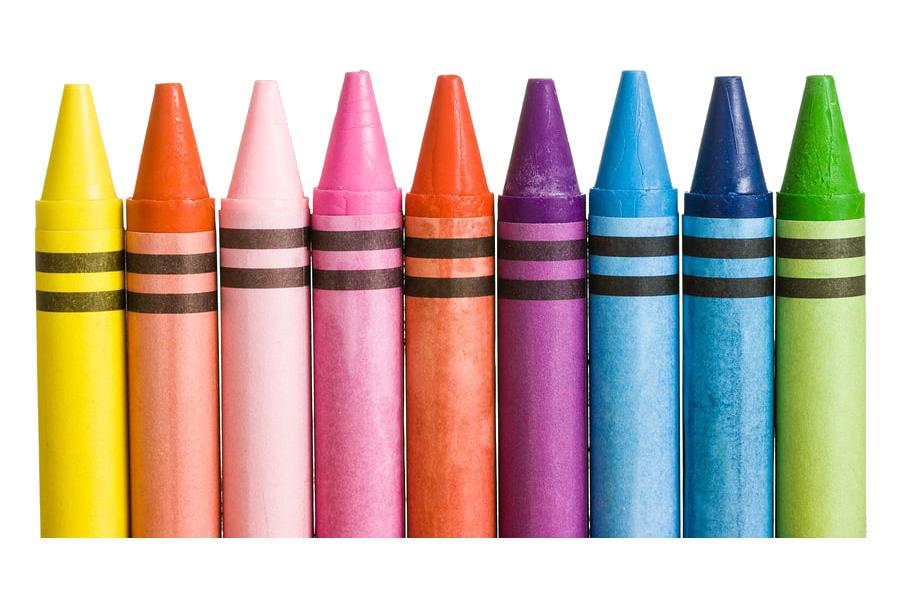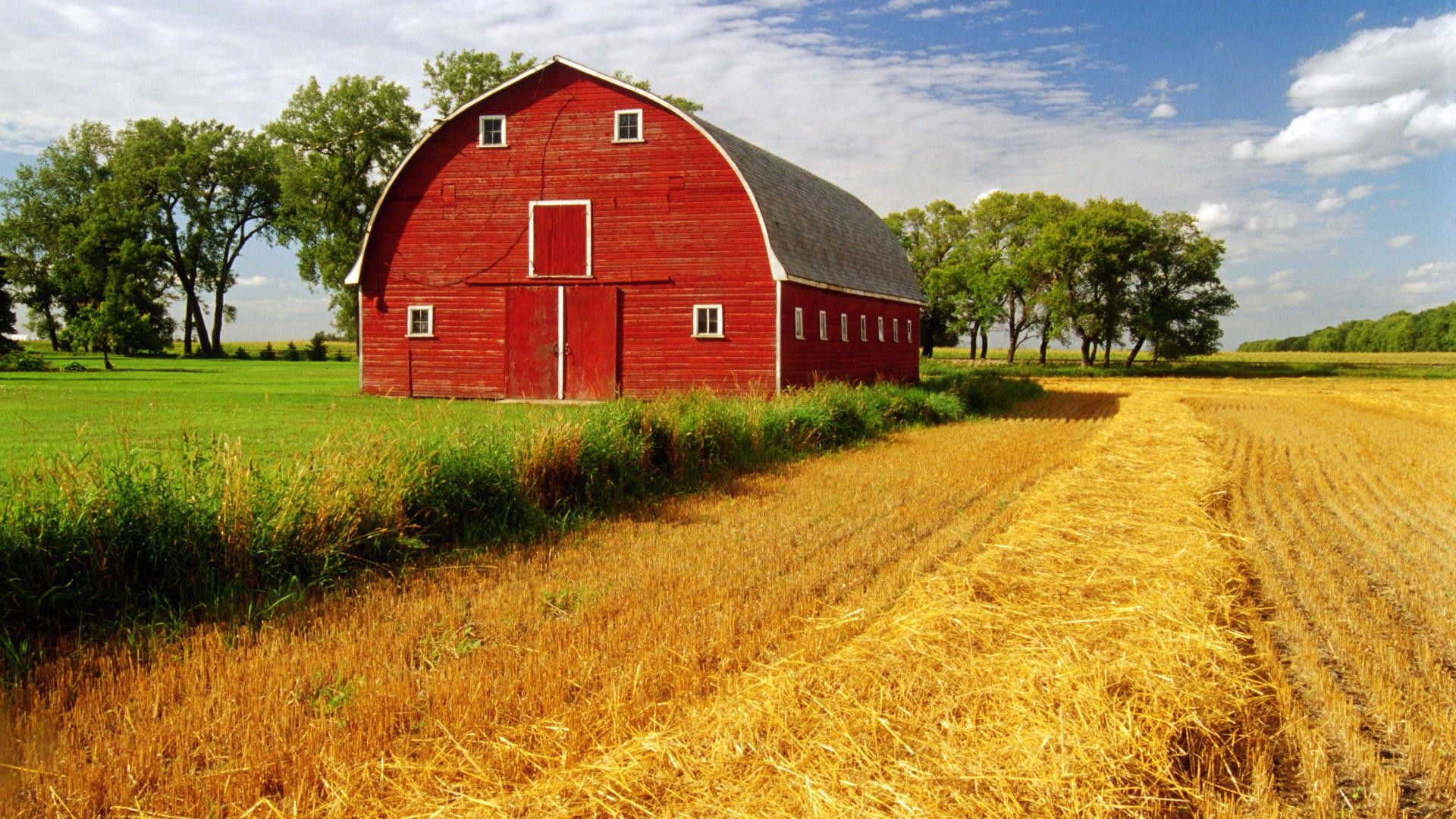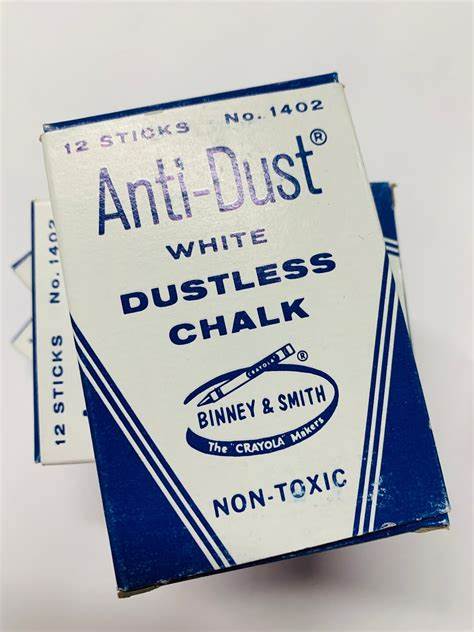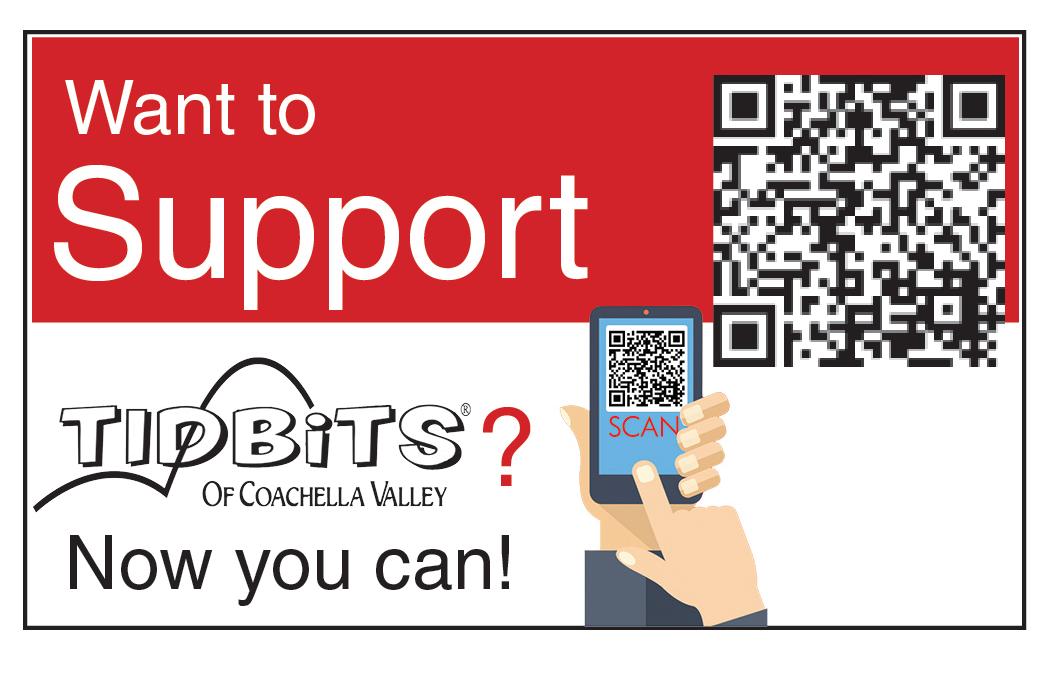
7 minute read
CRAYONS • Vol.20: #40 • (9-29-2024) Tidbits of Coachella Valley
The crayons that children (and adults!) use worldwide today were made possible through progressive discoveries over many years by a number of inventors. This week, Tidbits fills in a word picture for you of the history and development of these colorful drawing materials, and we'll do our best to stay inside the lines!
EARLY DEVELOPMENT
• History records go back as far as the 1400s, when Leonardo da Vinci experimented by adding powdered pigment to beeswax, thereby creating a primitive version of pastel chalk. His efforts were somewhat successful but left much room for improvement, and future progress was slow.
• Pencils were historically made of graphite. However, in 1795, French artist and pencil maker Nicolas-Jacques Conte was upset because the Napoleonic wars interfered with the supply chain. He stretched his limited stock by adding clay to powdered graphite to extend what he had on hand, vastly improving the pencil. He experimented by

adding clay to the beeswax-and-pigment pastel chalks, inventing the world’s first basic crayons. He sold them, calling them “Conte’s Crayons.” In French, the word “crayon” means “pencil.”
• In 1864, Joseph Binney founded the Peekskill Chemical Company in upstate New York, producing charcoal and a product called lampblack (also called carbon black), a pigment made from soot. It was used to make useful items like ink and shoe polish. He was later joined in business by his son, Edwin, and his cousin Harold Smith.
• In 1885, the company, now called Binney & Smith, began selling red paint colored with iron oxide, or rust. This became the most popular color for barns because it was the cheapest paint on the market.

A new market for carbon black opened up when it was discovered that tires, which had previously been white, would last longer if carbon were added to the rubber mixing process. Business boomed.
• Schoolchildren throughout the country practiced writing using a smooth flat rock called slate because paper was rare and expensive. In 1900, Binney & Smith found that by crushing a soft form of slate into a powder and then compressing it into a thin rod, they could manufacture greycolored slate pencils for writing on black slates. They opened a factory in Easton, Pennsylvania.

• In 1902, Binney & Smith released a new product called a marking crayon. Made of wax with carbon black added, it was used in industry to mark lumber, cardboard, bricks, packaging paper, and wooden boxes. Railroads used it to mark cargo freight because it wouldn’t wipe off or wash away.

• Teachers complained that the chalk they used on their blackboards filled the air with chalk dust. Chalk was brittle and terribly squeaky. In response, Binney & Smith developed “dustless chalk” made of chalk crushed to powder, then mixed with crushed gypsum and melted paraffin wax, then poured into molds.

The slightly heavier ingredients allowed the loose particles to fall to the floor rather than float in the air. This finally solved the chalk problems.

• Edwin Binney’s wife was a school teacher. She told him that kids needed something colorful to draw with. The only crayon-type implements available were expensive imports from France. Edwin Binney and his team experimented with clays, waxes, and minerals. By now, paper was cheaper and readily available.
COMMERCIAL PRODUCTION
• Crayola Crayons were named after the French word for chalk, “craie,” plus “-ola,” meaning “oily,” while also being a popular suffix for things like the Victrola, Motorola, Pianola, etc. Binney’s wife suggested the name, and it was voted on unanimously.
• In 1903, the company released the first box of Crayola Crayons. They were non-toxic, not brittle, cost a nickel and contained eight colorful crayons that revolutionized art in classrooms.

• When the Crayola factory expanded during the 1920s, they employed people from the surrounding countryside to glue labels on each individual crayon. Horse-drawn wagons delivered crates full of crayons, packets of labels and glue. Each family was responsible for a single color. They would return the finished product to the factory for payment. In this way, it kept the Pennsylvania factory in business while supporting families in the area throughout the lean times of the Great Depression. Today, of course, labels are automatically applied by machinery.

MILESTONES
• In 1948, Crayola introduced the 48-count box arranged in “stadium seating” style.

• The Crayola Company struck a deal with Woolworths in 1949 to distribute crayons nationwide.
• By 1958, the 64-color box with a built-in crayon sharpener was released.
• An episode of “Mister Roger’s Neighborhood” aired in 1981 showed a video demonstrating how crayons are made.
• In 1996, Fred Rogers was invited to the Easton, Pennsylvania factory to pour the company’s 100 billionth crayon. The crayon, labeled “Blue Ribbon,” was the first of one million blue crayons included in the new specially designed 96-crayon box. Of those, just ten crayons sported a special all-white label entitling the lucky finder to enter a contest to be the grand prize winner. A granny from the state of Washington won the grand prize: a bond worth $100,000.

• In 2017 Crayola announced they were releasing a new blue hue, and requested people write in with their suggestions for the name of the new blue crayon. Top of the list were “Dreams Come Blue,” “Blue Moon Bliss,” and “Star Spangled Blue.” However, the winner chosen after all votes were cast was “Bluetiful.”

• In conjunction with National Crayon Day, Crayola created the world’s largest functional crayon to celebrate the new color. It weighs 1,352 pounds and is 15 feet long. It’s on display at the Crayola Experience crayon museum in Orlando, Florida, with a replica located at company headquarters in Easton, PA.

• Crayola now sports 120 different colors. In addition, there are special sets of unusual crayons, including shimmery pearlescent; confetti crayons with different colors embedded into each stick; glitter crayons made with real glitter; metallic, neon, and others.
• One set, released in 2020, is called “Colors of the World” and contains 24 different skin tones. The original crayon called “Flesh” was renamed “Peach” in 1962 to recognize that not everyone’s skin is the same color.
• Pictures created with the very first crayons in 1903 remain as vibrant today as the day they were created.

• One study identified the top 20 most recognizable odors to American adults. Top on the list were coffee and peanut butter, followed by Vicks VapoRub, baby powder, lemon, cinnamon, tuna, and beer. Ranking #18 on the list was the smell of Crayola crayons.
• Interestingly enough, that distinctive crayon odor is not present in specialty colors such as neon, fluorescent, or metallic-colored crayons because their manufacturing processes are different.


